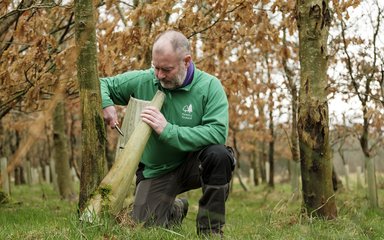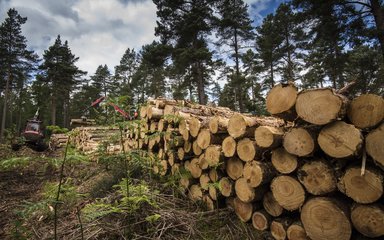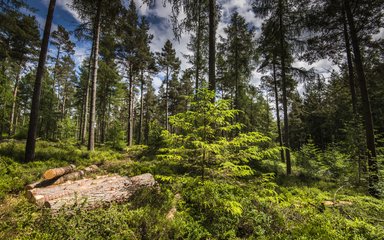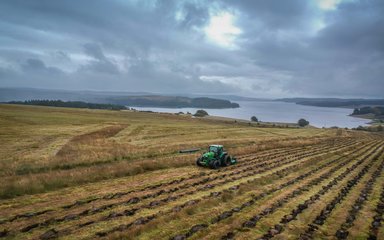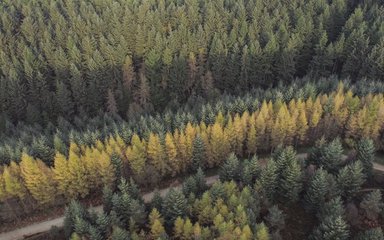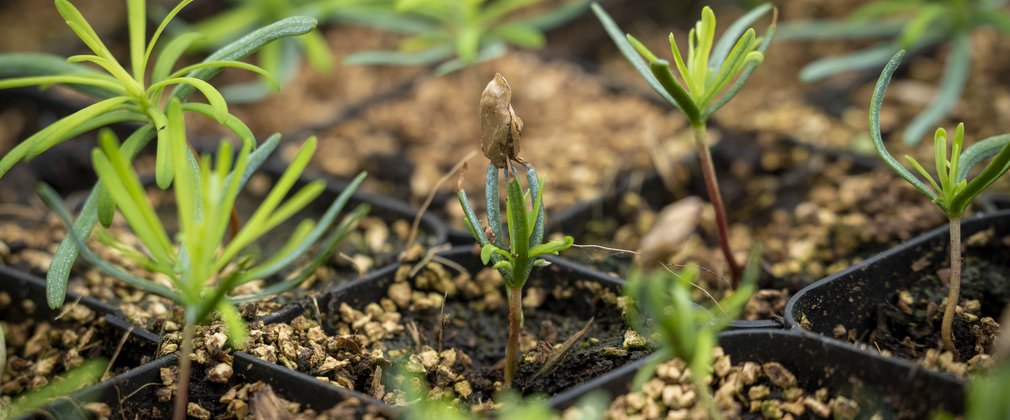
Trees start life as tiny seedlings
Our nurseries grow 7 million new trees every year to replant forests across England and create new areas of woodland. Find out how we're growing our future forests.

It starts with a seed
Our trees are grown from seed, and some are grown from cuttings from healthy plants. We use only the best seeds from the best quality trees to produce the strongest saplings that are adapted to their environment. We also source some seeds from places where the climate today is similar to site conditions we're expecting in the future, to give our forests the best chance.
Seeds can be sown indoors and grown in a glasshouse. Others are sown directly into seedbeds in the nursery field, or started indoors then transplanted to the field to continue growing. As all the seedlings are growing, they are cared for by our staff who check they meet our strict standards of plant health and biosecurity. Our homegrown trees also mean we don’t have to source them from other countries, which risks importing new pests and diseases. We make sure the trees we grow in the nation’s forests are the very best that they can be.
At the tree nursery
Our one hectare glasshouse grows 3.5 million trees from seed each year. The glasshouse helps us to grow a more diverse range of trees. The germination and growth of the seeds is carefully nurtured using an irrigation system. The whole glasshouse environment is computer-controlled using a combination of fans, shade screens and roof ventilation to regulate the temperature, humidity and light levels. Controlling these conditions increases survival rates, helps produce healthy plants and reduces the use of chemical pesticides.
On the open nursery, another 3.5 million trees are produced annually in fields. The majority of these are conifers needing two years to reach a suitable size for planting. A range of broadleaved species are also grown this way including oak, beech, alder, aspen, rowan and birch. Once our saplings reach the right size, we carefully remove them, hand sort them and place in bags according to size and species. They’re then kept safe in a cold store until they are needed for planting at the site they are destined for.
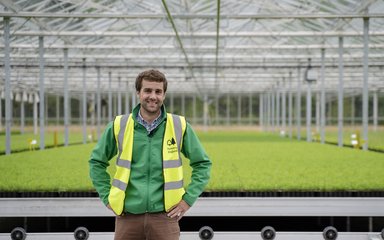

From sapling to forest
We pick up the trees from the nursery just before they are planted. Planting is usually done entirely by hand and during the winter, when the weather is colder and the trees enter a dormant stage. Planting during this time means they experience less stress from being moved and planted, and have lots of time to adjust to their new home before they start to grow in the spring.
We decide which tree species to plant based on the soil, landscape and local climate of the region. We grow and plant a wide range of conifers and broadleaved trees, all carefully matched to site conditions.
Right trees in the right place
Different trees are better suited to different aims. Some are good for timber or have high value for nature, so we take this into account in our planning and planting to make sure the right tree is in the right place. We also use a natural capital approach to ensure forests deliver a wide range of benefits for people, nature and the economy.
By looking ahead, we can give our forests the best chance to adapt to the changing climate. We use insights from science to predict how our forests will function in the future, and tools that support the decisions we take, so that the trees we plant today will have the best chance of thriving. Diverse forests are more resilient to climate change and tree diseases. A fifth of the trees we plant are novel species predicted to cope better with changing climate conditions, including types of redwood, cedar and maple.
